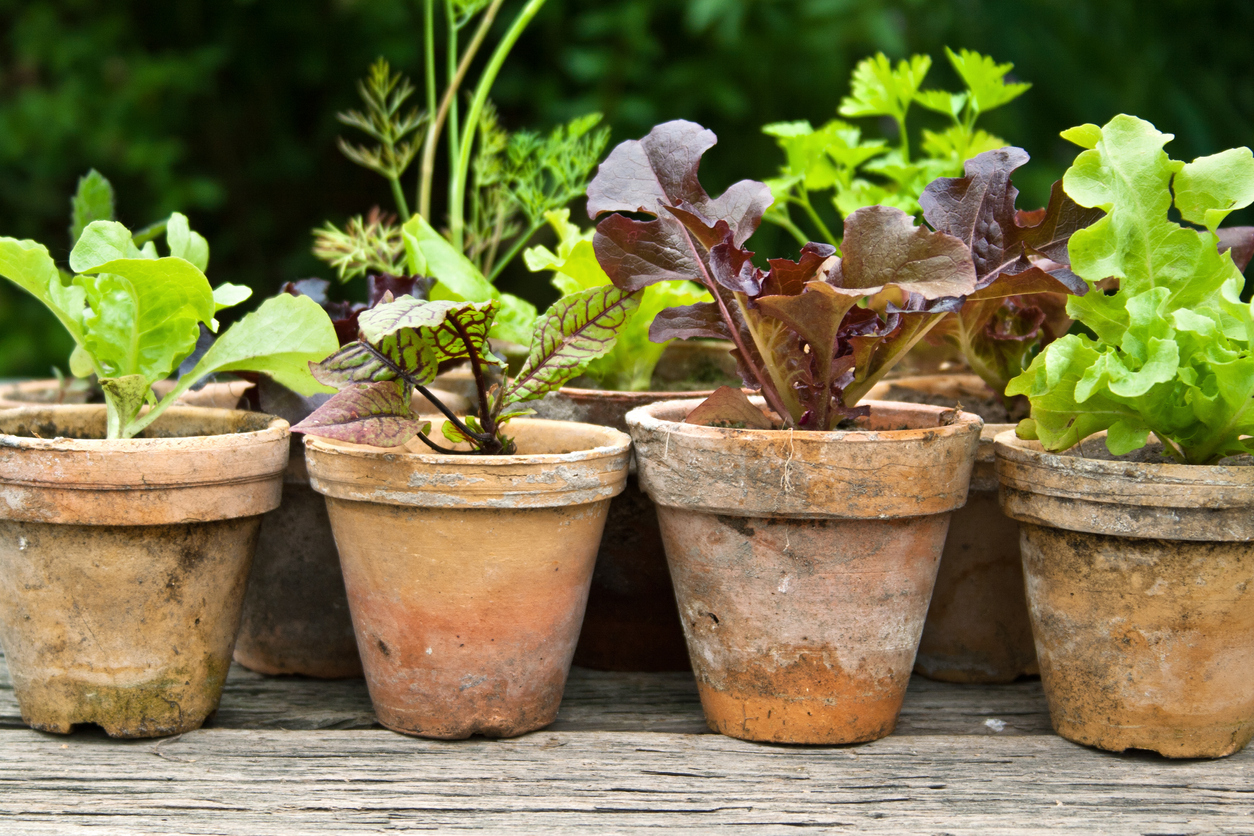Grocery store lettuce certainly gets a bad rap for contamination and frequent recalls, so it’s no wonder so many people have started growing their own lettuce, whether in an indoor hydroponic garden, in raised beds, or containers. But one of the best ways to control the environment of your crop is by growing lettuce in pots. So let’s talk about why.
- Lettuce can be grown as ornamental. You’ve probably seen lettuce growing in pots before; in fact, many storefronts grow lettuce and cabbage in window containers for decorative use because they grow out so lovely and look even prettier when they bolt and bloom.
- You can move the lettuce anywhere it needs. Since lettuce prefers cool weather, most people think of it as a spring and fall crop, but you can grow lettuce all summer in some zones, just as long as you can offer it partial sun and shade, which is easy to do if your growing lettuce in pots because you can simply move them.
- Pots are easily covered. Say you have some pesky skunks that come out at night or you are concerned about bird poo raining down on your crop. With pots, you can either cover and secure your plants as needed or move them to a covered porch overnight.
- No need to transplant. A considerable benefit of planting anything in pots, including lettuce, is that you can start your seeds directly in the pot, with no need to transplant!
- Lettuce doesn’t need deep soil. Lettuce has shallow roots and doesn’t need deep soil to grow, so it’s happy to grow in pots with just 6-8 inches of soil.
- Any pot will do. Terracotta is an excellent choice because it has great drainage, and excess moisture will wick away, preventing root rot. Still, you can also use plastic if you live in a hotter environment and need your plants to hold moisture longer.
- Any varietal will do. All lettuce can grow well in pots, though some favorites are Butterhead, Romaine, Crisphead, and Loose Leaf.
- No slugs! Slugs love to munch on lettuce and can destroy entire crops. However, if you create a raised container garden like our Raised Lettuce Garden, you can eliminate slugs pretty much entirely.
- Less chance of disease. What’s nice about growing lettuce in pots is that you can separate your plants if you want to. So if your lettuce catches an infection or infestation, it doesn’t mean the rest of your crop needs to.
- Harvest all season. As long as you don’t cut below the crown, you can have easily accessible lettuce all season long. Simply use the outer leaves as you desire, only trimming about 1/3 of the plant at a time and leaving an inch between your cut and the base of the plant. It will continue to keep growing!

How to Start Growing Lettuce in Pots
There are, of course, downsides, which apply to anything grown in a pot, which is that without proper watering and drainage, your lettuce can dry out or get root rot. However, terracotta pots are great for fixing this problem because they are porous, so you can keep a regular watering schedule without worrying about water-logging your lettuce.
A good soil mix for growing lettuce in pots would include lots of compost and peat. The soil would be best between 6-7 in terms of pH. A simple, balanced fertilizer like 10-10-10 will make plants happy too, when the plants are still only a few inches tall.
While you can probably count slugs out of a container lettuce garden, there may be caterpillars if you keep your pots close to trees, and aphids. And if you let lettuce rot, maggots may be attracted to it and then go on to devastate your other plants. So do try to pay attention.
The great thing about lettuce is that it’s pretty vocal about its needs. If it begins to wilt, you probably need to either move it out of the sun or water it, which is easy to do when growing lettuce in pots.
If you’d like to learn more about growing lettuce at home, check out our Lettuce Gardening Guide.
Do you have any questions about growing lettuce in pots? Let me know!


 Previous
Previous


Sometimes in September, I lay a bag of garden or potting soil flat, cut the top layer of plastic off (leaving a 2” “rim” all around, and scatter lettuce seeds over the soil, press in, and water with a spray bottle. Works with arugula too.